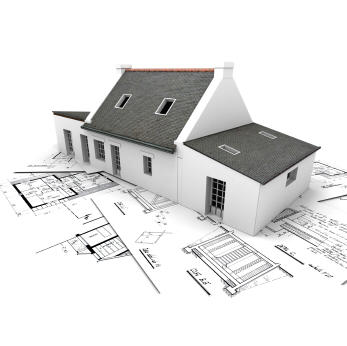Looking at house plans online or in catalogs is a lot of fun and if you find a plan or two that you really like they can seem like a great way to save some money in your building budget. While I encourage you to look at plans and learn about your likes and dislikes, I generally discourage the purchase of plans from these resources for several reasons.
1-Local codes
While the plans sold through plan companies are drawn to meet nationally recognized building codes, they may or may not apply to your local jurisdiction. Every region has local variables and issues that the local codes address. In our area of Montana we have seismic, snow, insulation, infiltration and radon considerations. In the mountains we also have steep slopes, rocky soils and enormous snow loads. Some regions have expansive soils or high water and hurricanes. So while your purchased plans may look nice, chances are they will have to be re-drawn to meet local permit requirements after consultation with a local engineer.
2-Changes and modifications
Chances are that even if you love a certain plan, there will be something that you want to adjust or tweak. There may be changes that have to be made to accommodate your neighborhood Design Review Board or your lifestyle. Again, you would be looking at re-drawing the plans, negating any savings.
3-Personalized Design
Every home site has advantages and disadvantages. Every client has personal preferences and unique lifestyle requirements. Your home is usually your biggest investment and has an enormous impact on your daily comfort, convenience and enjoyment. A home designed for your site; taking into account views, prevailing winds, southern exposure, access, neighbors as well as your personal needs becomes a daily joy to live in. Planning pays off in daily dividends living in a home that has been thoughtfully designed for location and owner.
4-Do I need an Architect?
The short answer is ‘that depends’. Some developments or jurisdictions require that you use an architect, others don’t. Many design/build firms have an in-house designer or architect that can be very cost effective. Local draftsmen and even your builder may be very qualified to help with your design. It is important to have a good rapport with your designer and to be upfront and honest about your likes and dislikes. Look at their portfolio and try to walk thru one of their homes if possible. Visit their website and Houzz site to get a feel for their designs. You want to mesh with them on style, size, priorities and budget. If green building or energy efficiency is important to you, find a designer who has experience in those areas.
A thoughtful designer will want to learn as much about you and your family as they can. They will schedule several meeting to review and revise. I send my clients off with homework to help us define their preferences and style. Bringing plan ideas, photos and articles will help your designer to understand what you want. Websites such as Houzz and Pinterest are wonderful for collecting and sharing ideas with your team.
Leave a Reply